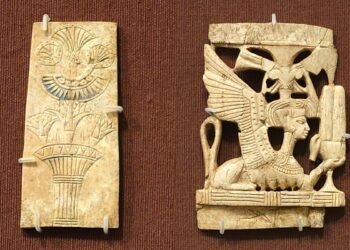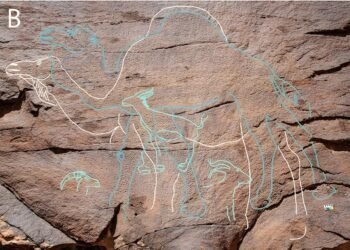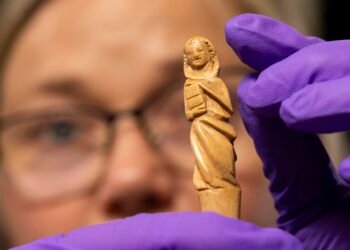Researchers from Washington State University (WSU), working in collaboration with colleagues at the Carnegie Museum of Natural History and the Smithsonian’s Museum Conservation Institute, have successfully recreated Egyptian blue, the oldest known synthetic pigment in the world, which has unlocked centuries-old secrets behind ancient craftsmanship.

The study, published recently in NPJ Heritage Science, describes how the team developed 12 authentic recipes for making Egyptian blue, a pigment first used approximately 3100 BCE as a substitute for expensive minerals like lapis lazuli and turquoise. The synthetic pigment adorned everything from statues and coffins to murals and cartonnage in ancient Egypt before its usage declined in Roman times and then eventually was forgotten during the Renaissance.
To replicate the pigment, the researchers attempted to combine silicon dioxide, copper, calcium, and sodium carbonate—ingredients believed to have been within reach of ancient Egyptian artisans. These mixtures were then heated at 1,000 degrees Celsius, in accordance with ancient kiln capabilities, for varying periods of time from one to eleven hours. Afterward, they cooled down the batches at different rates, finding that slow cooling produced more vibrant blue hues.
The study’s most surprising discovery was that the desired rich blue did not necessarily have to be obtained by employing only a pigment consisting of cuprorivaite, the blue crystal pigment that produces Egyptian blue’s signature color. The researchers noted that to get the bluest color requires only about 50% of the blue-colored components.

Spectrometry and other advanced microscopy techniques such as X-ray diffraction and near-infrared photoluminescence mapping revealed the pigment’s microstructure to be highly complex. There are intergrown phases of cuprorivaite, silica glass, wollastonite, and sometimes copper oxide within each grain, illustrating that Egyptian blue is not so much a uniform substance as more of a composite material. This heterogeneity contributes to its color variability, depending on processing conditions and method of application.
The study also offers new data on how rates of cooling affected the final color. Slow-cooled samples, which might have been buried in sand or ash to stay warm, contained up to 70% more cuprorivaite than the rapidly cooled samples in air, which resulted in deeper, more vibrant colors.

Aside from its importance in history, Egyptian blue has become a recent scientific interest due to its unique modern applications. When exposed to visible light, the pigment radiates infrared radiation—light imperceptible to the eye but practical in security ink, biomedical imaging, and telecommunications. Its crystal structure is also similar to high-temperature superconductors and thus potentially of significance to materials science studies.
While the project began as a way to produce museum display samples, it evolved into a detailed exploration of ancient technology with contemporary relevance.
The recreated pigment samples are now displayed at the Carnegie Museum of Natural History in Pittsburgh as part of a new exhibition on ancient Egypt.
























Interest, thanks for sharing. Regards Kimberly
What do you mean ‘synthetic’? I’m pretty sure synthetic dyes date from the 1800’s.